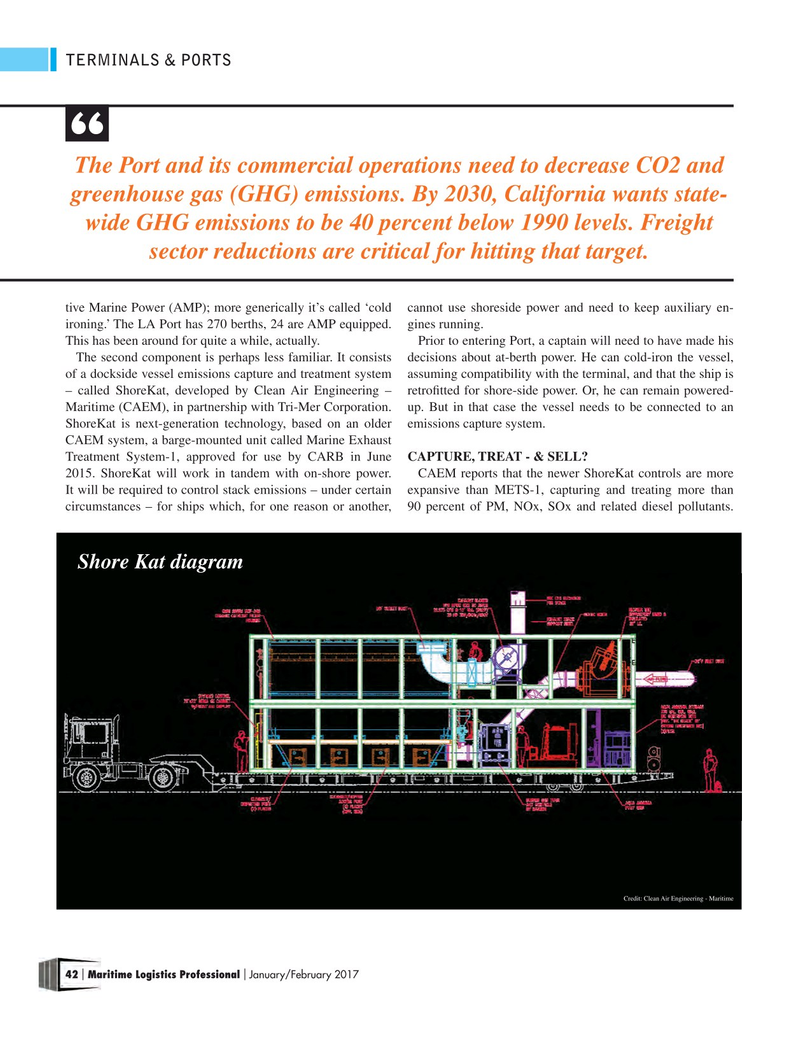
Page 42: of Maritime Logistics Professional Magazine (Jan/Feb 2017)
CRUISE SHIPPING PORTS
Read this page in Pdf, Flash or Html5 edition of Jan/Feb 2017 Maritime Logistics Professional Magazine
TERMINALS & PORTS
The Port and its commercial operations need to decrease CO2 and greenhouse gas (GHG) emissions. By 2030, California wants state- wide GHG emissions to be 40 percent below 1990 levels. Freight sector reductions are critical for hitting that target.
tive Marine Power (AMP); more generically it’s called ‘cold cannot use shoreside power and need to keep auxiliary en- ironing.’ The LA Port has 270 berths, 24 are AMP equipped. gines running.
This has been around for quite a while, actually. Prior to entering Port, a captain will need to have made his
The second component is perhaps less familiar. It consists decisions about at-berth power. He can cold-iron the vessel, of a dockside vessel emissions capture and treatment system assuming compatibility with the terminal, and that the ship is – called ShoreKat, developed by Clean Air Engineering – retro

 41
41

 43
43
